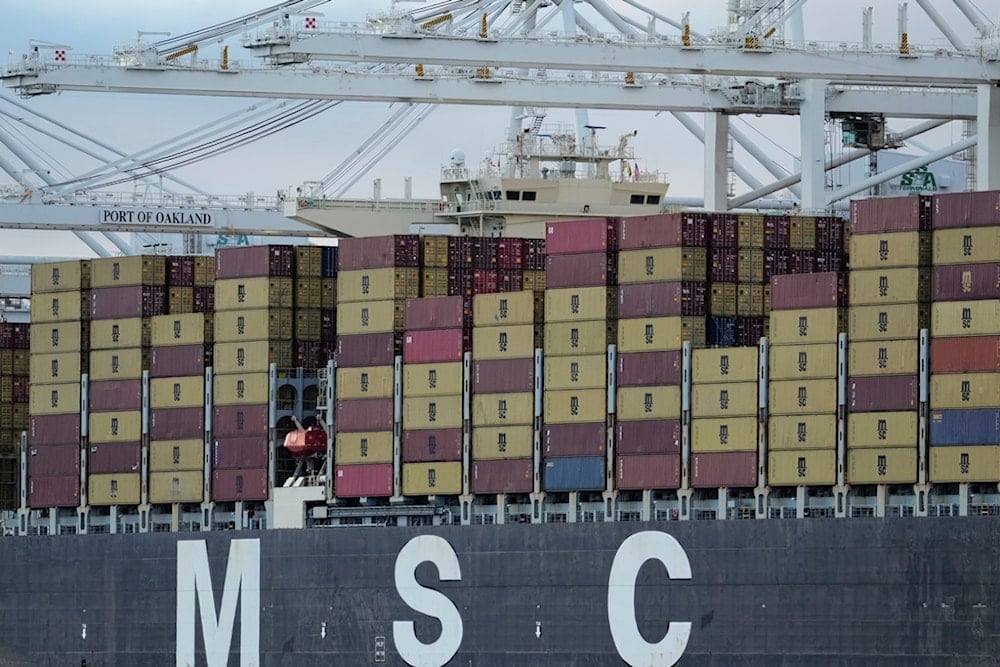US, China agree to push for tariff pause extension as deadline nears
The current agreement, negotiated in Geneva this past May, temporarily froze a damaging cycle of retaliatory tariffs that had reached triple-digit levels earlier this year.
-

Shipping containers line the MSC Rosa M cargo vessel docked at the Port of Oakland in Oakland, Calif., Wednesday, July 23, 2025, as seen from Alameda (AP Photo/Godofredo A. Vásquez)
The United States and China have agreed to push for an extension of their temporary trade truce, signaling cautious progress amid persistent global trade tensions. The announcement came after two days of high-level discussions in Stockholm between US Treasury Secretary Scott Bessent and China’s top trade envoy, Li Chenggang.
The current agreement, negotiated in Geneva this past May, temporarily froze a damaging cycle of retaliatory tariffs that had reached triple-digit levels earlier this year. That truce, widely credited with easing pressure on global supply chains, is set to expire on August 12, with the risk of harsh duties snapping back into place if no further action is taken.
China’s state media outlet Xinhua reported that "both nations have reached consensus following two days of talks in Stockholm to continue pushing for an extension of the tariff suspension." Li described the negotiations as "candid, in-depth, constructive," noting that both sides exchanged views on "key economic and trade issues" and are committed to maintaining close diplomatic engagement.
Behind the scenes, the discussions reportedly centered on a 90-day extension of the truce, a move intended to prevent tariff levels from reverting to the punishing highs seen earlier in 2025. The proposal would keep US tariffs at 30% and Chinese tariffs at 10%, maintaining a fragile balance while broader issues are negotiated.
Trade Standoff
This comes as US President Donald Trump, since returning to office in January, has pursued an increasingly aggressive protectionist trade policy. In addition to tariffs on China, the White House has slapped steep levies on imports from longstanding allies, targeting steel, aluminum, and autos. Without exemptions, dozens of countries face a new wave of US tariffs as soon as Friday, creating widespread anxiety among global exporters.
While the Stockholm talks mark a step forward, questions remain about the underlying power dynamics. Beijing holds significant leverage due to its dominance over rare earth mineral exports, materials vital to the US defense and tech sectors. At the same time, China has been diversifying its trade portfolio toward Southeast Asia, Russia, and Europe to soften the blow of US tariffs.
Read more: China-US trade falls 10.4% in H1-2025 to $289.36 billion
Meanwhile, American businesses and consumers have begun to feel the economic strain of Trump’s tariffs, limiting Washington’s flexibility. Analysts suggest that although the US holds negotiating weight as the world’s largest consumer market, China’s resilience and control over strategic supply chains give it the upper hand in long-term negotiations.
A potential Trump-Xi summit later this year could further shape the trajectory of US–China trade policy. For now, the Stockholm agreement offers a temporary reprieve from economic escalation, but the structural tensions remain unresolved.

 3 Min Read
3 Min Read








